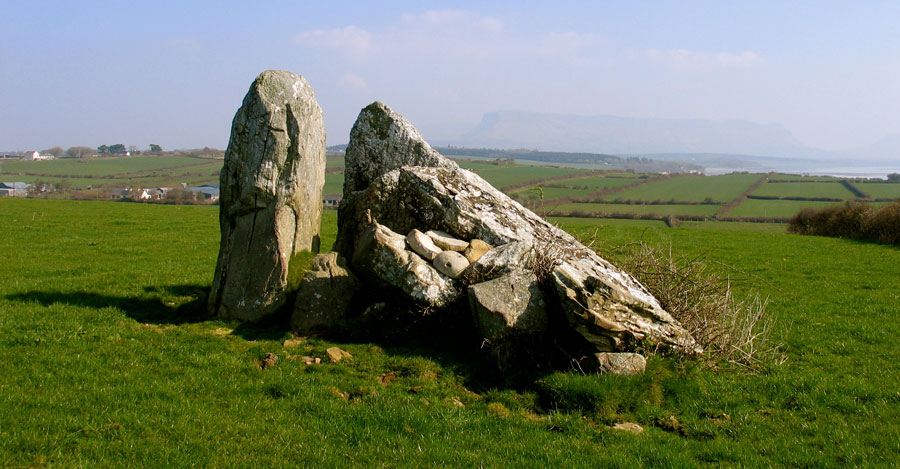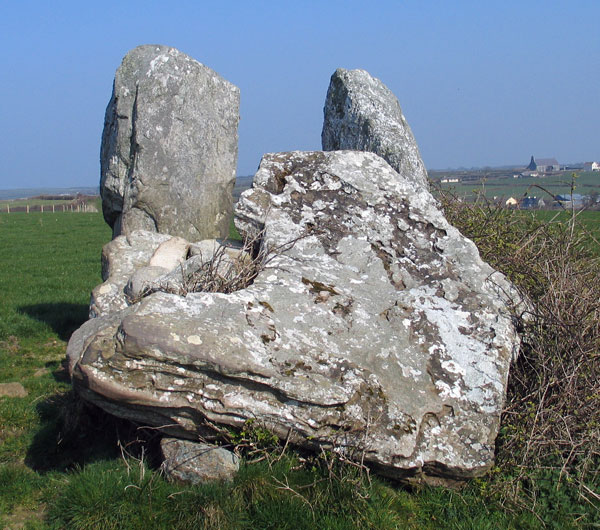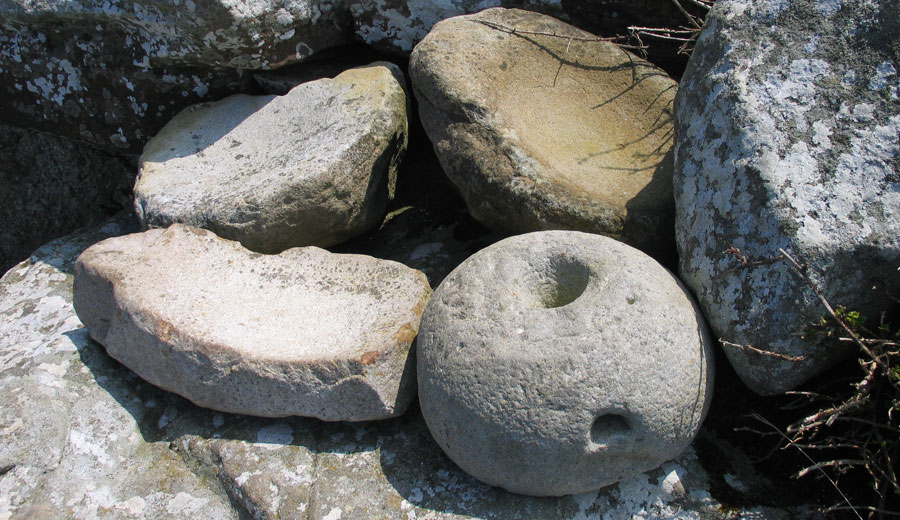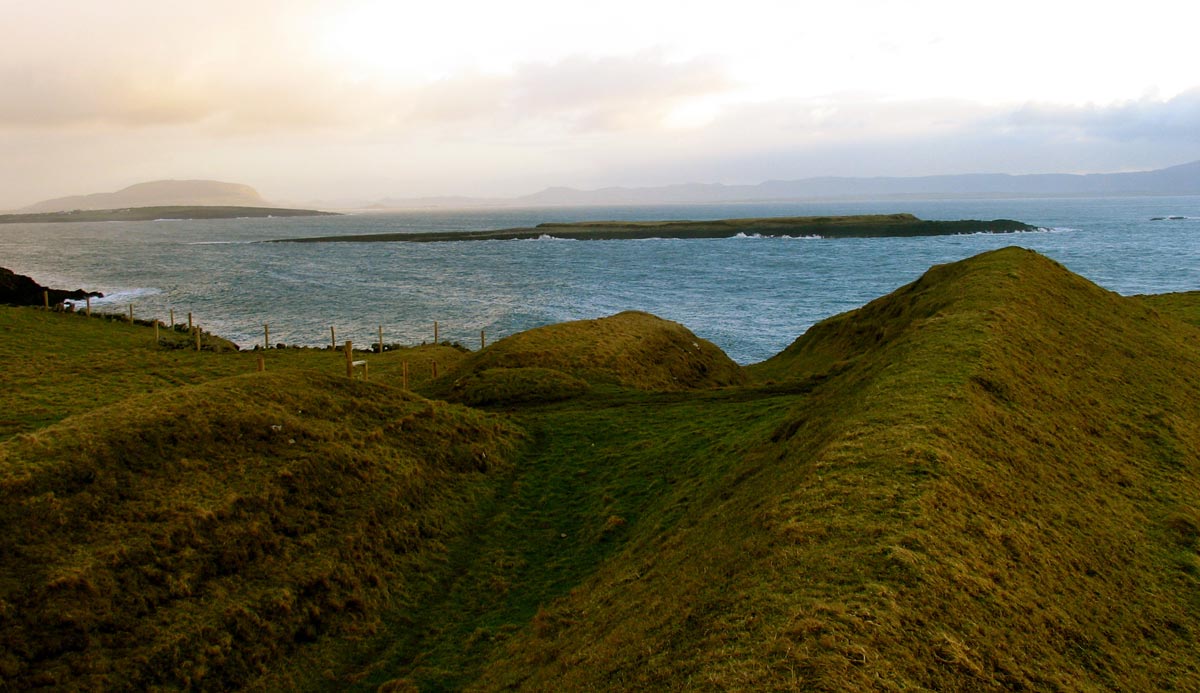Cloghcor portal dolmen
In the townland of Cloghcor pronounced by the country people Cloghcur there is a megalith, situated close to the ruins of the Castle of Ardtarmon, near Raughley, and about 200 yards South of the road. It is marked on the Ordnance 6" Sheet as a Druid's Altar, and appears originally to have consisted of three lofty uprights, surmounted by a covering-slab; the two remaining pillars are upwards of nine feet in height above the present surface of the soil; the third had, at some remote period, succumbed either to violence or atmospheric action, and lies fractured beneath the covering-slab, which has fallen outwards and to the westward. The greatest length of this slab is 12 feet 6 inches from East to West, and it is upwards of 2 feet in thickness.
W. G. Wood-Martin, Rude Stone Monuments, 1888.
This fine portal dolmen is found on the summit of a drumlin near the end of the Magherow peninsula, to the west of north County Sligo. The name Clough Cor means "The Stone on the Round Hill". On the old Ordinance Survey maps the dolmen is marked as a druids altar, a common misconception from the antiquarian era.
There are about 200 portal dolmens in Ireland, the oldest currently dated being Poulnabrone in County Clare at 3,800 BC. Cloughcor is privately owned and permission from the landowner must be obtained to visit the monument, which is on a working farm.
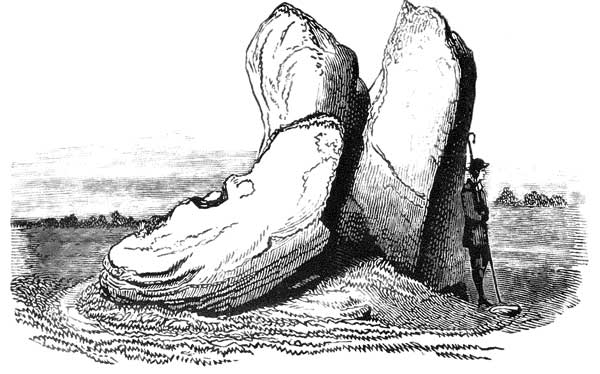
The impressive example at Cloughcor is constructed in an unusual location 40 meters above sea level at the summit of the hill. Such monuments are generally found in sheltered areas, often in a river valley or close to a stream. Cloghcor commands fantastic views of the surrounding countryside, especially to the south, where Knocknarea and Queen Maeve's cairn stand out across Drumcliffe Bay.
Equinox Alignment
There is a fine view towards the Dartry range in the east where the heads of Benwisken, Benbulben and King's Mountain make a striking horizon. In an exciting recent discovery, landowner Leo Leydon noticed that the profile of the dolmen echoes the shape of King's Mountain ten kilometers to the east.
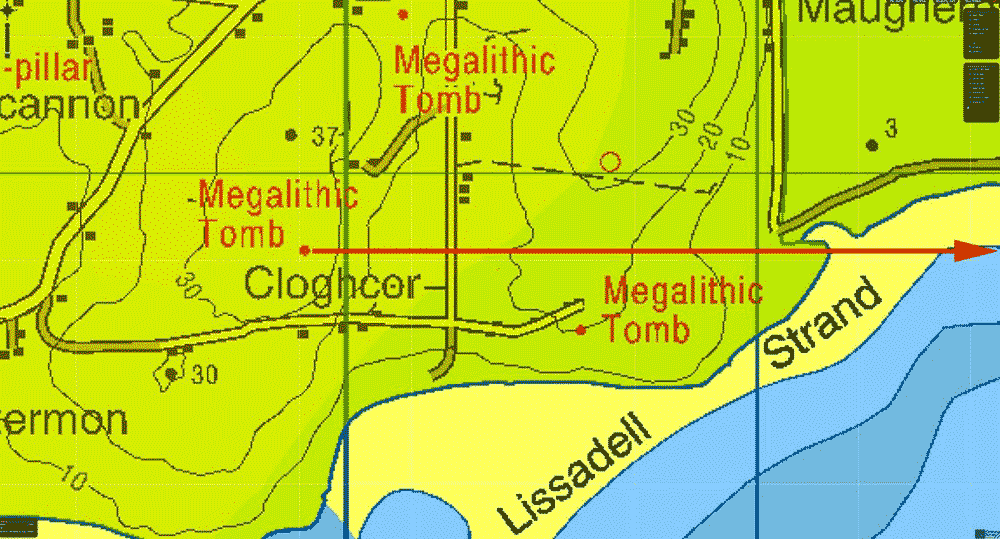
At sunrise on the spring and autumn equinoxes, the sun emerges from a notch in the head of King's Mountain in a spectacular display of light and shadow. This is a spectacular visual alignment, especially as portal dolmens generally do not exhibit astronomical orientations. The dolmen casts a stricking shadow, showing how these monuments may have functioned as sundials.

